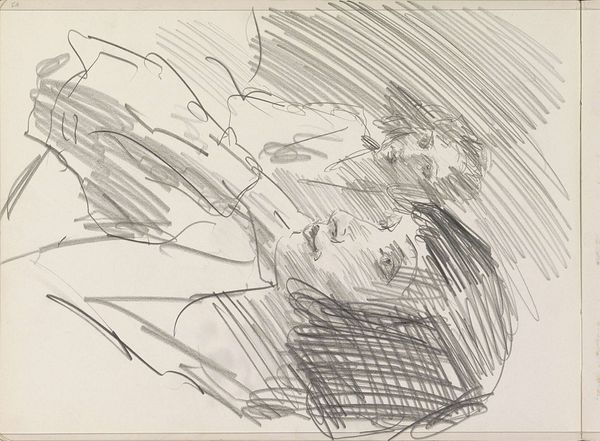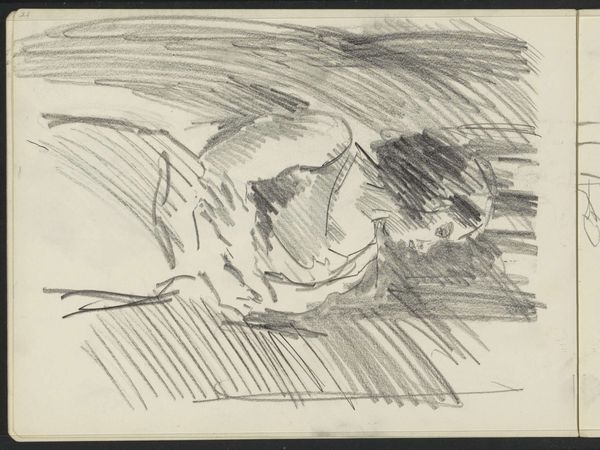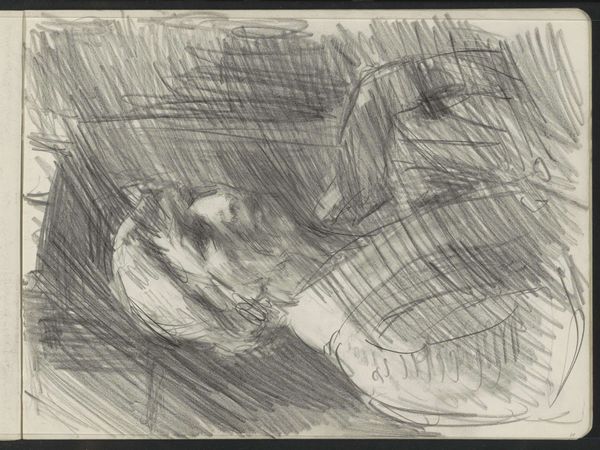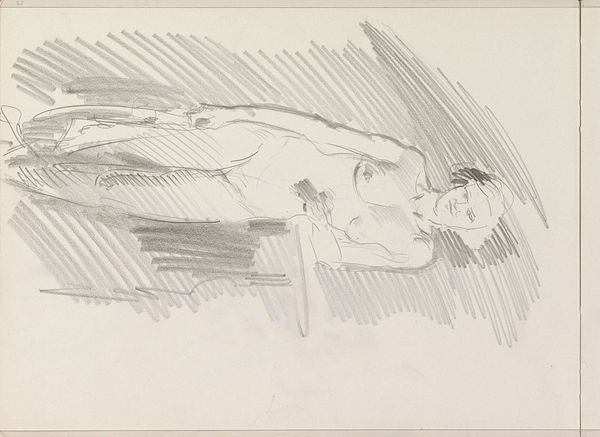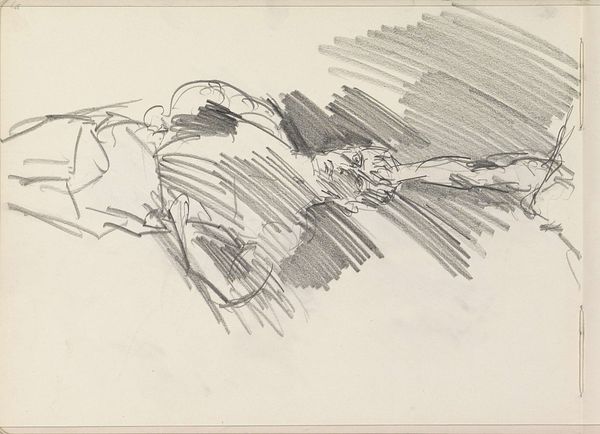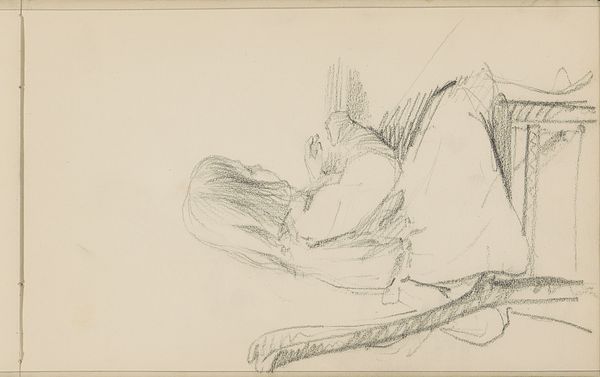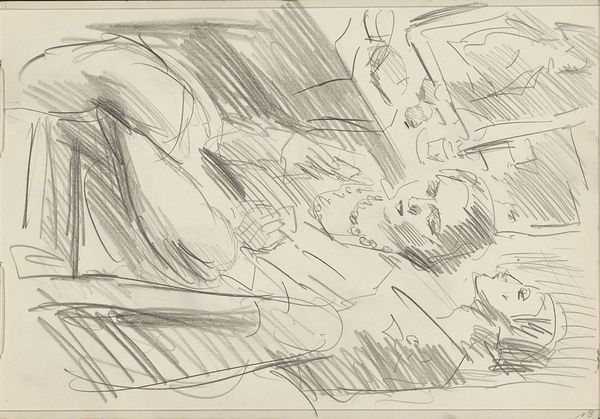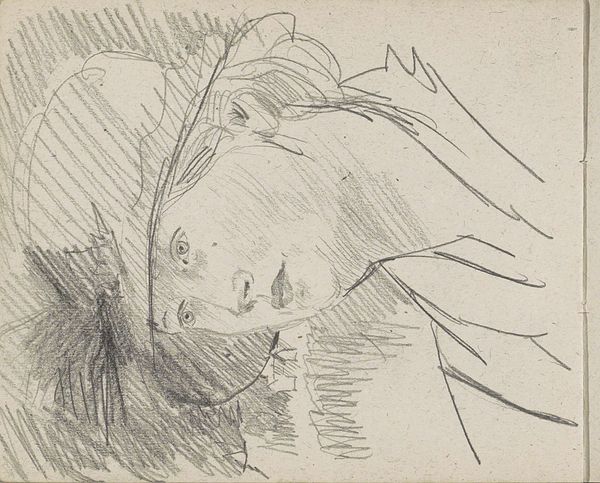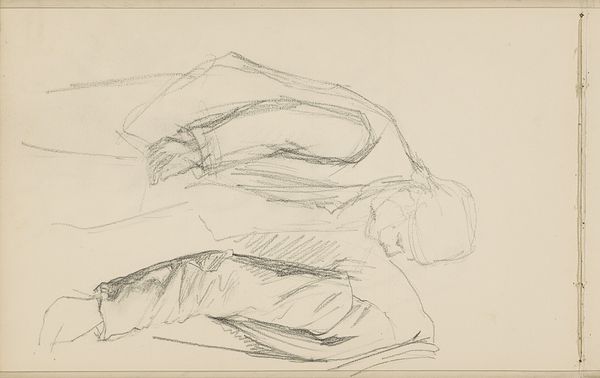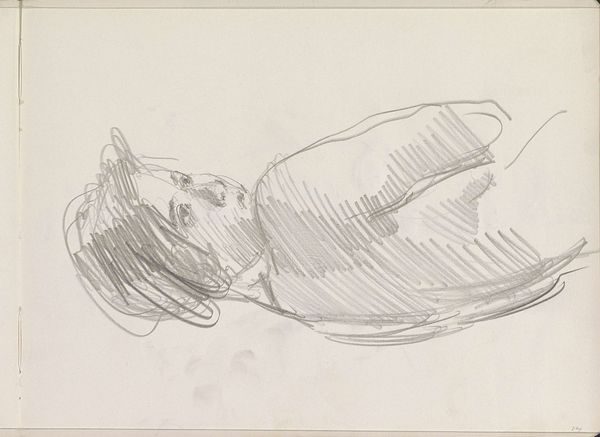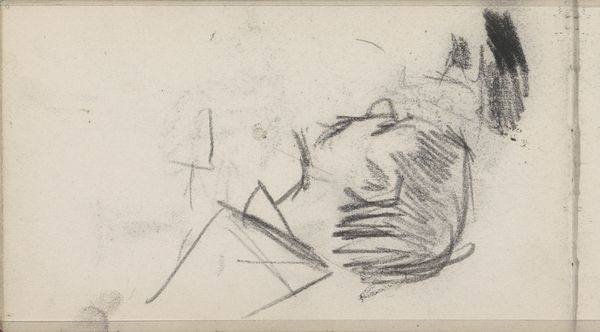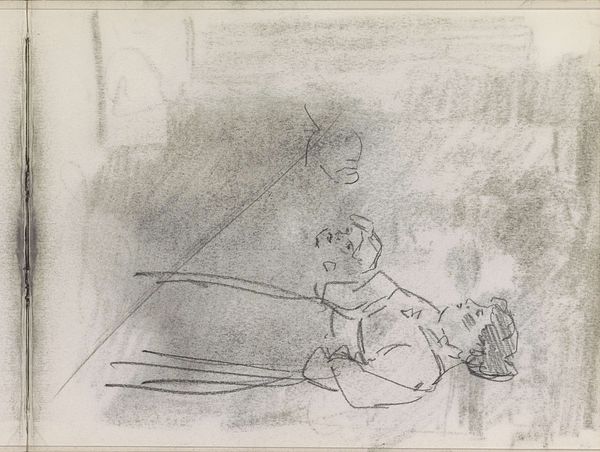
drawing, pencil, graphite
#
portrait
#
drawing
#
pencil sketch
#
figuration
#
pencil
#
graphite
#
modernism
Copyright: Rijks Museum: Open Domain
Curator: Looking at this pencil drawing, "Vrouwenbuste," or "Bust of a Woman," attributed to Isaac Israels and likely created between 1915 and 1925, I’m struck by its immediacy. The graphite marks capture light and shadow with what seems like effortless ease. Editor: My first impression is of a fragmented portrait, or rather, a study in transience. The shading is evocative. What is most compelling is the very obvious lack of completion. It speaks of a certain detachment. What could you make of the composition of this portrait? Curator: There's an intriguing juxtaposition here, wouldn’t you agree? The head itself is rendered with some care—the soft curves, the almost drowsy expression. The rapid hatching provides a foundation. Yet, the hat atop the head is almost abstracted, pure gestural lines forming volume with only slight resemblance to a familiar silhouette of such headwear. The whole image balances poised portraiture against active studio process. It's modernist, to be sure. Editor: How do you suppose social forces of that time have informed such style? How did the art world shape and reshape around such artists? It appears to embody an intimacy that was, for example, popularized with photography. Curator: The historical context is definitely crucial. Israels belonged to a generation exploring psychological realism—reflecting perhaps, on societal shifts around perceptions and public portrayals of women. Consider, too, the rise of mass media; these quickly jotted pencil lines could stand in stark opposition against highly finished academic paintings of the prior generations. Editor: Exactly. So the question arises, did Israels perhaps resist or intentionally disregard some conventions. Was he aware of social trends for presenting and re-presenting images in Dutch society, and can that be interpreted as part of the artist’s intention? Curator: Very possibly. Perhaps his rapid mark-making signals something further. His style conveys more than mere external likeness, delving deeper. And his stylistic tendencies—captured swiftly in a pencil sketch—are a direct way of reaching at and grasping inner character. It captures some otherwise unreachable dimension of expression. Editor: This image then might well encourage viewers to reflect upon historical conditions of production, and the shifting conventions that ultimately shape perceptions and presentation of a specific demographic. The implications, in that regard, could potentially shift our perspective. Curator: I concur. Reflecting upon technique, this sketch unveils much about how the art engages, or possibly disrupts. Its inherent artistic qualities become clearer alongside such historical considerations.
Comments
No comments
Be the first to comment and join the conversation on the ultimate creative platform.
